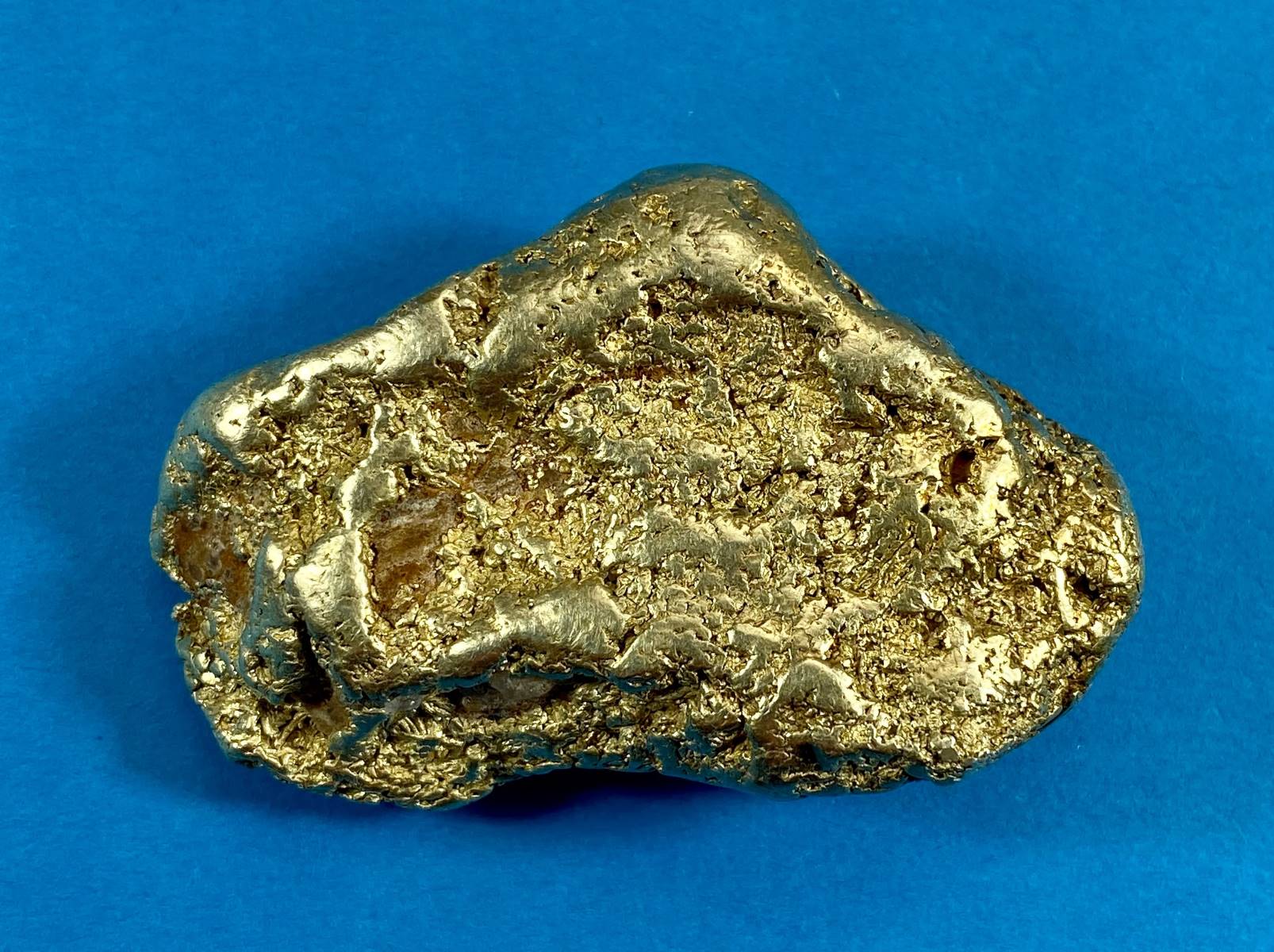
Electrum is a fascinating alloy that has intrigued humans for centuries. This naturally occurring blend of gold and silver has been used in various cultures for coins, jewelry, and even ancient artifacts. But what makes electrum so special? Electrum is unique because it combines the best properties of both gold and silver, resulting in a material that is not only beautiful but also durable. Its natural luster and resistance to tarnish make it a favorite among jewelers and historians alike. Whether you're a history buff, a science enthusiast, or just curious, these 50 facts about electrum will enlighten and entertain you.
Key Takeaways:
- Electrum is a fascinating alloy of gold and silver with a rich history dating back to ancient civilizations. It has unique properties, making it valuable for jewelry, coins, and even modern electronics.
- This remarkable material has been used in art, culture, and mythology, and continues to be a subject of scientific study. Its beauty, rarity, and historical significance make it a prized subject for coin collectors and historians.
What is Electrum?
Electrum is a naturally occurring alloy primarily composed of gold and silver. It has fascinated humans for centuries due to its unique properties and historical significance. Let's dive into some intriguing facts about this remarkable material.
-
Electrum is a naturally occurring alloy of gold and silver, often with traces of copper and other metals.
-
The name "electrum" comes from the Greek word "elektron," which means "amber."
-
Ancient Egyptians used electrum for various purposes, including making jewelry and coins.
-
Electrum was used as early as 3000 BCE in ancient Egypt.
-
The first known coins were made of electrum in the ancient kingdom of Lydia, around 600 BCE.
Historical Significance of Electrum
Electrum has played a crucial role in human history, especially in ancient civilizations. Its unique properties made it a valuable resource for various applications.
-
The Lydians, an ancient civilization in modern-day Turkey, were the first to use electrum coins.
-
Electrum coins were used in trade and commerce, making them one of the earliest forms of currency.
-
The famous Greek historian Herodotus mentioned electrum in his writings.
-
Electrum was highly prized in ancient Greece and Rome for its beauty and rarity.
-
The ancient Egyptians believed that electrum had magical properties and used it in religious ceremonies.
Properties of Electrum
Electrum's unique blend of metals gives it distinct characteristics that set it apart from pure gold or silver.
-
Electrum is harder than pure gold, making it more durable for crafting items.
-
The color of electrum can vary from pale yellow to bright gold, depending on the silver content.
-
Electrum has a lower melting point than pure gold, making it easier to work with.
-
The presence of silver in electrum gives it a unique luster and shine.
-
Electrum is resistant to tarnish, which makes it ideal for long-lasting jewelry.
Uses of Electrum
Throughout history, electrum has been used for various purposes, from currency to decorative items. Its versatility continues to make it valuable today.
-
Ancient Egyptians used electrum to cap the pyramids, giving them a brilliant shine.
-
Electrum was used to make the famous Mask of Agamemnon, a funerary mask from ancient Greece.
-
The ancient Greeks used electrum to create intricate jewelry pieces.
-
Electrum was used in the making of the famous Colossus of Rhodes, one of the Seven Wonders of the Ancient World.
-
Modern jewelers still use electrum to create unique and beautiful pieces.
Electrum in Modern Times
While electrum's historical significance is well-documented, it continues to be relevant in today's world.
-
Electrum is used in modern electronics due to its excellent conductivity.
-
Some high-end watches feature electrum components for their durability and aesthetic appeal.
-
Electrum is sometimes used in dental work for its biocompatibility and strength.
-
The alloy is still used in some countries for minting coins.
-
Electrum's unique properties make it a subject of study in materials science.
Fun Facts about Electrum
Electrum's fascinating properties and historical significance make it a subject of many interesting tidbits.
-
The famous Greek philosopher Aristotle wrote about electrum in his works.
-
Electrum was sometimes referred to as "white gold" in ancient texts.
-
The ancient city of Sardis, the capital of Lydia, was known for its electrum deposits.
-
Electrum was often used in ancient times to create ceremonial objects and artifacts.
-
Some ancient cultures believed that electrum had healing properties.
Electrum in Mythology
Electrum has also found its way into various myths and legends, adding to its allure and mystique.
-
In Greek mythology, electrum was associated with the sun god Helios.
-
The ancient Egyptians believed that electrum was the flesh of the gods.
-
Electrum was thought to have protective properties in ancient cultures.
-
Some legends suggest that electrum was used to create magical amulets.
-
The ancient Greeks believed that electrum could ward off evil spirits.
Electrum in Art and Culture
Electrum's beauty and rarity have made it a popular material in art and culture throughout history.
-
Electrum was used to create the famous Golden Mask of Tutankhamun.
-
The ancient Greeks used electrum to decorate their temples and statues.
-
Electrum was often used in ancient mosaics and inlays.
-
Some ancient cultures used electrum to create musical instruments.
-
Electrum has been featured in various works of literature and poetry.
Electrum in Science
Electrum's unique properties make it a subject of interest in various scientific fields.
-
Scientists study electrum to understand the properties of natural alloys.
-
Electrum is used in some scientific instruments for its conductivity.
-
The study of electrum helps researchers learn about ancient metallurgical techniques.
-
Electrum's composition can provide clues about the geological history of an area.
-
Modern technology allows scientists to create synthetic electrum for research purposes.
Electrum in Numismatics
Electrum's use in coinage has made it a valuable subject for numismatists, or coin collectors.
-
Electrum coins are some of the oldest known coins in existence.
-
Collectors highly prize electrum coins for their historical significance.
-
Some electrum coins feature intricate designs and inscriptions.
-
The study of electrum coins can provide insights into ancient economies and trade networks.
-
Electrum coins are often displayed in museums and collections around the world.
Final Thoughts on Electrum
Electrum, a fascinating alloy of gold and silver, has captivated humans for centuries. From ancient coins to modern jewelry, its unique blend of metals offers both beauty and durability. This natural alloy, often found in riverbeds and mines, played a crucial role in early economies. Ancient civilizations, like the Egyptians and Greeks, valued electrum for its rarity and versatility. Today, it continues to intrigue scientists and historians alike.
Understanding electrum's properties helps us appreciate its historical significance. Its natural occurrence and varying composition make each piece unique. Whether you're a history buff, a jewelry enthusiast, or just curious, electrum offers a glimpse into the past and a connection to our ancestors.
So next time you see a piece of electrum, remember its rich history and the countless stories it holds. This alloy truly stands the test of time.
Frequently Asked Questions
Was this page helpful?
Our commitment to delivering trustworthy and engaging content is at the heart of what we do. Each fact on our site is contributed by real users like you, bringing a wealth of diverse insights and information. To ensure the highest standards of accuracy and reliability, our dedicated editors meticulously review each submission. This process guarantees that the facts we share are not only fascinating but also credible. Trust in our commitment to quality and authenticity as you explore and learn with us.


